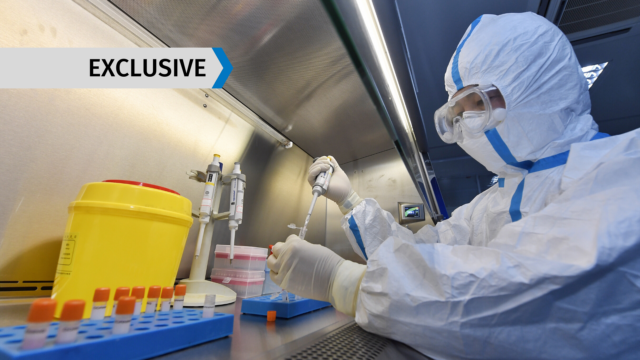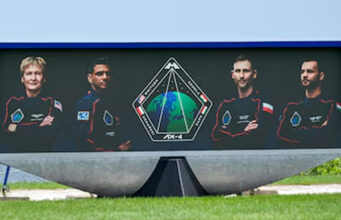NEW DELHI: In the first part of an exclusive interview, Dr Niteen Wairagkar, global pandemic and new viral diseases expert speaks to Opinion Editor Ashwin Ahmad and explains the processes that need to be gone through before a vaccine for the COVID-19 virus can be made available in the market
Q: What are the main questions that scientists and researchers have to consider when developing a vaccine for the COVID-19 virus?
A: In the case of COVID-19, scientists and researchers must define what type of vaccine would be needed, what is known as Target Product Profile of the vaccine needed. Then they will need to decide whether to use new technology or use the old and time-tested technology for vaccine development. There are a variety of vaccine platform technologies that you could use. (Editor’s note: A vaccine platform technology is a system that uses certain basic components which can be adapted quickly — by inserting new genetic or protein sequences—so that it can be used against different pathogens. This is faster, more efficient and cheaper than developing a single-use vaccine which is more expensive and harder to scale up.) The new technologies could be fast and effective but since they are not proven, you need to tease out safety issues and explore whether the risk-benefit equation is in favor.
Q: What are the stages that the vaccine has to go through before this happens?
A: Once the vaccine is developed in the laboratory, it needs to be tested in an appropriate animal model for its safety, toxicity and evaluation of immunogenicity and effectiveness, first usually in small animal model and then it will be taken up to a higher model which is usually a non-human primate or the monkey model. With all the data that is generated from these tests, vaccine regulators will then look at the safety of these vaccine constructs, the toxicity of these vaccine constructs and its immunogenicity and effectiveness i.e. whether it protects and to what extent could it protect humans. Once this is done, then permission is granted for human vaccine trials.
Q: Does it then go into human trials?
A: Yes. This data is studied and then goes to human trials where in Phase-I safety study, you normally begin by testing on healthy adult humans usually in the 18-55 age group. This data will look further at determining the safety and immunogenicity but also at how long does this vaccine take to develop anti-bodies and how long would these anti-bodies last?
Once the safety of the vaccine is indicated in the Phase-I study, you can go to Phase-II where you decide the dose or the dosing schedule as to what would be is the right amount to develop enough antibodies to fight the virus. Then you go to Phase-III which is what we call clinical efficacy where you prove that this vaccine actually protects a human being against clinical disease caused by the virus. These studies are done sequentially during normal vaccine development but sometimes two studies could be combined with a bigger sample size to save some time.
Q: How long do you think it would take to create a vaccine for COVID-19?
A: Normally, for any normal vaccine, by normal — I mean creating any vaccine in a non-pandemic situation — the vaccine development takes at least five to seven years to go through all these stages, collect data and pass regulatory evaluation. Since we are now in a pandemic situation, we need to generate this data much faster, we need to innovate to accelerate the timelines without compromising the ‘risk-benefit ratio.’ What this means is that we generate essential data required for the safety evaluation of vaccine and then evaluate if vaccine is efficacious. Combining Phase I/II studies with enough numbers recruited in vaccine trial might generate necessary safety, immunogenicity, efficacy data which can lead to conditional approval of COVID-19 vaccines.
Once the conditional approval is granted, the vaccine can be given to the high-risk group, most probably healthcare workers in campaign mode and generate effectiveness data. We can probably accelerate these vaccines and get them to the finish line within the next two years using some innovative trial designs and parallel track processing.
Q: How many vaccine developers are working to develop the COVID-19 vaccine?
A: Currently, there are 115 vaccine candidates that are being developed globally now. 73 of these vaccine candidates are being developed by the vaccine manufacturers and the remaining are being developed by academic and non-profit institutions. Many of these vaccine developers are using new technologies like mRNA or DNA vaccine while others are using viral vectors, recombinant proteins or subunit vaccines.
Since we don’t know which vaccine will be safe and efficacious, it would be good to have as many vaccine candidates in the field. Of these vaccine candidates, at-least 4-5 vaccines have already reached Phase-I safety clinical trials in human subjects, which is remarkable progress within three months of the emergence of this virus. This has never happened in human history before.
Q: Would not climatic conditions, body types and differing reactions to drugs play a part? Would we not need different strains of the vaccine to deal with this?
A: This virus’s genetic makeup has been analyzed and it has been seen that genetically it is pretty stable. There are no variations. So, the vaccine would offer a similar kind of immune response. It may vary geographically to some extent but I don’t think there will be major differences in the immune response though and there will be a lot of data available to look into this aspect as well when this vaccine would be conditionally approved. WHO has come up with a global trial design for multi-country vaccine trials to explore possible differences in vaccine responses.
















